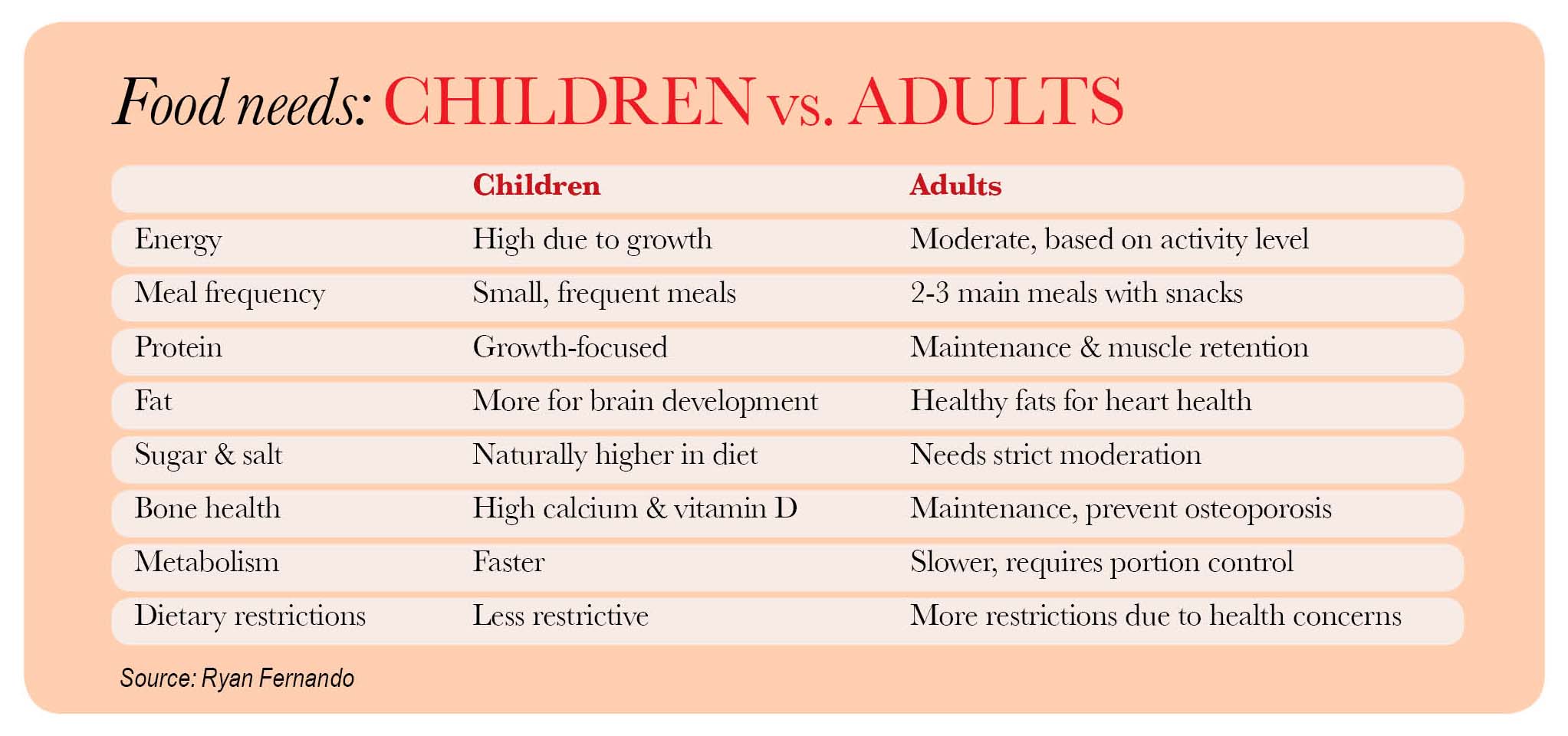– Aruna Raghuram interviewed two nutrition experts to provide parents with advice on developing healthy eating habits in children, especially picky eaters
For most parents, a top everyday worry is getting children to eat right and adequately. According to a recent survey conducted in the UK, eight in 10 parents (76 percent) are finding it harder to promote healthy eating habits in their children.
ParentsWorld spoke to two health and nutrition experts — Ryan Fernando, a Bengaluru-based celebrity nutritionist and founder of Qua Nutrition clinics, and Jyoti Pachisia, a nutritionist with Parentune, a Gurugram-based for-profit social enterprise dedicated to parenting matters — to share their opinions about children’s healthy eating habits. Excerpts:

Ryan Fernando
What are the norms for children’s healthy eating habits?
Ryan Fernando (RF): Metabolism levels of children fluctuate as they grow. To grow and develop optimally children require higher nutrient intake of vitamins and minerals. When parents visit me for paediatric nutrition counselling, I recommend blood tests to identify nutrient deficiencies — mainly, vitamin D, calcium, zinc, magnesium and omega 3.
Children need to have frequent, small meals throughout the day. Snacks such as fruits and nuts, whole grains and dairy products are ideal. Also, children need 1.5 gm of protein per kg of body weight (adults: 1 gm). I recommend feeding children eggs, lean meat, soy, tofu and dairy products to ensure they get sufficient protein.
Among vegetables my favourites are beetroot and sweet potato, and among fruits, banana, papaya and chikoo. For brain health and development, parents should include omega 3-based foods such as chia seeds, walnuts, almonds, avocados, pistachios, pine nuts, fish and organic ghee in children’s daily diets.

Jyoti Pachisia
Jyoti Pachisia (JP): Although the principles of healthy eating are similar for adults and children, children don’t require to eat the same portion sizes as adults. They have smaller bodies and stomachs and their food portions should reflect this requirement. For instance:
Calorie intake. Children need proportionally more calories per kg of body weight than adults.
Portion sizes. Children should eat smaller portions than adults, with portion sizes often based on the size of their palms.
Nutrient emphasis. While both need balanced diets, children require more nutrients such as calcium for bone development and iron for red blood cell production.
Texture and preparation. Foods for children should be softer or pureed depending on their age, with focus on easily chewable textures.
Suggestions to manage picky eaters
RF: Ask a child to choose between two healthy options such as cucumber or carrot, fruit or yogurt. Instead of commanding them to eat, give them choices.
It may take 15 days for a child to like a particular food. I tell children: make your brain the king of the body, not the tastebuds.
JP: Avoid arguments over food. Create a relaxed and enjoyable setting for meals, steering clear of force feeding or scolding, and focus on amiable conversations rather than mere consumption.
Provide a selection of healthy options in every meal, mixing some favourites with new fare. Allow your child to choose what she wants to sample. Make meals visually appealing with new shapes, colours, and creative serving styles.
Serve small amounts of unfamiliar foods to prevent overwhelming her. Repeated exposure is also important. Introduce new foods multiple times, even if they are initially rejected. Celebrate your child’s attempts to try new foods, even if it’s just a tiny bite.
Children, food and TV
RF: Parents and nannies don’t have the patience to coax a child to eat and often switch on the TV or mobile phone so she will eat without a fuss. Watching TV breaks the link between food and satiety. Also, when we watch TV while eating, we don’t chew our food properly. Nutrient release is more efficient when you chew food, mix it with saliva, and then swallow.
JP: Eating in front of the TV, laptop or mobile phone can make children eat more than they should. Research shows that children and adults eat more when they are distracted. This increases risk of obesity.
Moreover, eating while watching TV may cause children to become so fixated on what they are watching that they pay no attention to the food on their plate. The digestive system is stimulated by the routines surrounding mealtimes. Encourage children to experience all the sensations that come with nourishing themselves to promote healthy digestion.
 General tips from the experts
General tips from the experts
Become a role model. Children emulate their parents. Make healthy food choices yourself — eat fruits, vegetables, and balanced meals so that children naturally adopt the same habits. “When parents express disgust for bad foods and enthusiasm for healthy foods it influences children,” says Fernando.
Avoid making negative comments about your body or the foods you eat, as this can inadvertently teach your child to develop a negative relationship with food, advises Pachisia.
Create a positive eating environment. Make mealtimes enjoyable by eating together as a family without distractions such as TV and mobile phones. Encourage dinner-time conversation, says Fernando.
Involve kids in meal preparation. “Encourage children to participate in grocery shopping, meal planning, and cooking. For instance when it’s time to prepare meals, involve them in age-appropriate tasks, such as washing veggies or stirring the pot. This will help them develop an appreciation for the effort that goes into meal preparation and make them more excited to eat the finished product,” says Jyoti Pachisia.
Encourage mindful eating and portion control. Teach children to listen for hunger cues rather than forcing them to finish everything on their plate. Serve appropriate portion sizes and encourage them to recognise and communicate when they are satiated, says Fernando.
Offer variety of food. “Introduce your child to a variety of foods; this enables them to develop a taste for healthy options,” advises Pachisia.
Also read: Building good food habits in children























